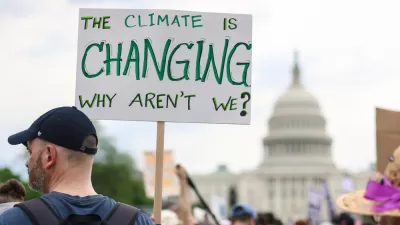The Lincoln Institute of Land Policy has undertaken the first significant study to find out if state smart growth policies are achieving their stated goals.
From the introduction to the report, available for purchase or as a free download online:
"This study defines 'smart growth' as a family of related policies with similar goals that have evolved over time. As such, the term refers not only to the latest incarnation of policies originally known as "land use control" and "growth management," among others, but also to the movement itself. This movement reflects a more or less continuous process of state land use policy development that began sometime before 1970 and continues today.
Although different states join or exit the smart growth movement
and policy priorities shift over time, the essential coherence
of these programs has persisted.
The antecedents of smart growth were environmentally driven, regional planning friendly land use programs that extended to the substate, state, and even federal levels, although proposals for national land use legislation were short-lived. Instead, national legislation focused on clean air, clean water, and coastal zone management, all of which required states to adopt a higher level of planning.
The roots of smart growth go back to the regionalists of the 1920s and national resource planning of the Progressive Era. But it was the seminal work of Fred Bosselman and David Callies (1971) in The Quiet Revolution in Land Use Control that marks the beginning of the smart growth movement we know today.
FULL STORY: Smart Growth Policies: An Evaluation of Programs and Outcomes

Manufactured Crisis: Losing the Nation’s Largest Source of Unsubsidized Affordable Housing
Manufactured housing communities have long been an affordable housing option for millions of people living in the U.S., but that affordability is disappearing rapidly. How did we get here?

Americans May Be Stuck — But Why?
Americans are moving a lot less than they once did, and that is a problem. While Yoni Applebaum, in his highly-publicized article Stuck, gets the reasons badly wrong, it's still important to ask: why are we moving so much less than before?

Research Shows More Roads = More Driving
A national study shows, once again, that increasing road supply induces additional vehicle travel, particularly over the long run.

Judge Halts Enforcement of Anti-Homeless Laws in Grants Pass
The Oregon city will be barred from enforcing two ordinances that prosecute unhoused residents until it increases capacity and accessibility at designated camping sites.

Advancing Sustainability in Los Angeles County Schools
The Los Angeles County Office of Education’s Green Schools Symposium brings together educators, students, and experts to advance sustainability in schools through innovative design, climate resilience strategies, and collaborative learning.

Using Old Oil and Gas Wells for Green Energy Storage
Penn State researchers have found that repurposing abandoned oil and gas wells for geothermal-assisted compressed-air energy storage can boost efficiency, reduce environmental risks, and support clean energy and job transitions.
Urban Design for Planners 1: Software Tools
This six-course series explores essential urban design concepts using open source software and equips planners with the tools they need to participate fully in the urban design process.
Planning for Universal Design
Learn the tools for implementing Universal Design in planning regulations.
City of Moreno Valley
Institute for Housing and Urban Development Studies (IHS)
City of Grandview
Harvard GSD Executive Education
NYU Wagner Graduate School of Public Service
City of Cambridge, Maryland
Newport County Development Council: Connect Greater Newport





























